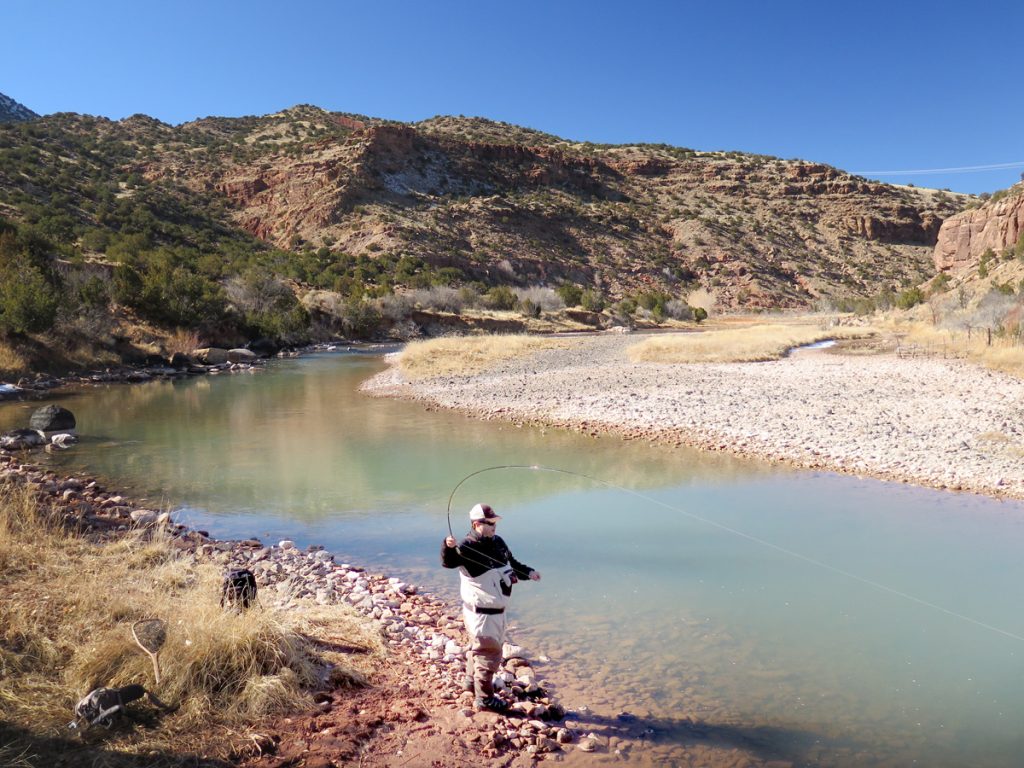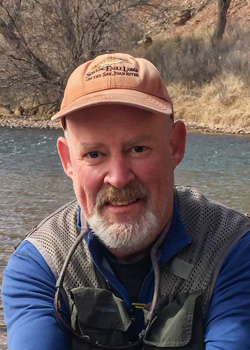
Near the end of 2023, the U.S. Army Corps of Engineers began maintenance activities on Abiquiu Dam, a project that required the agency to cease flows to the Rio Chama below the dam. The river below the dam provides some of the only winter stream fishing for anglers without the time to drive all the way up to the San Juan River tailwater near Farmington. It doesn’t harbor the huge fish populations the San Juan does, but it’s a pleasant place to wet a line nevertheless. The red cliff surroundings remind you that you’re in a special place, and every now and then you might be lucky enough to tangle with a brown trout the size of a small shark.
Abiquiu Dam isn’t managed for fishing or other forms of recreation. It’s part of the water delivery system serving the cities and farms along the middle Rio Grande. Keeping the system in top shape is the Army Corps’ main job. The cities, mainly Albuquerque, must have their water.
The Chama’s potential as a trout fishery, however, isn’t nothing. This is why the Department of Game and Fish invested substantially in a habitat improvement project in 2020. Perhaps to accommodate low winter flows, the project entailed the creation of pool habitat and the installation of boulder structures that would generate turbulence to flush sediment and generate healthy insect populations. Since many area fishing businesses derive substantial winter revenues from this fishery, the Game and Fish project should be considered as an investment in economic development.
The habitat project was envisioned to address low flows, not no flows (although we fishermen should be thankful that the deepened pools might hold enough water to sustain trout throughout the worst of dam maintenance activities). In fact, the complete cessation of flows might not have even registered if concerned Chama anglers had not raised a stink.
Ivan Valdez, owner of Santa Fe’s The Reel Life fly shop is one of those anglers. He’s fished at Abiquiu since boyhood, and he only became aware of the dam maintenance project at the eleventh hour. Immediately he contacted the Army Corps, then the Department of Game and Fish, and while the agencies might not be able to address Valdez’ every concern, they appreciate his outreach and hope to do better the next time dam repairs are necessary.
“If I had my way,” Valdez says, “there would be guaranteed minimum flows below Abiquiu for the sake of the ecosystem and the outdoor economy. Short of that, there should at least be transparency and better public outreach. I understand that the Corps is responsible to water users elsewhere, but if trout anglers were notified earlier, we might have come up with a plan to minimize the damage. Because there definitely will be damage. Spawning will be impacted, and fish trapped in pools are going to get hammered by fishermen.”
It’s a fact of our lives that, in the execution of their duties, government agencies responsible for managing one resource will make decisions affecting other resources. We fishermen should remember this, if only to remind ourselves that the fishing we hold so dear will not take care of itself. We need to engage, which means understanding what’s going on in other spaces. Like agriculture: especially in these times of perpetual drought, how our crops and meat is produced involves the same water that our beloved trout live in.
Even in Questa, we should stay informed on urban development projects down south. We need to know who’s doing what in the legislature and on Capitol Hill, as well as who’s not doing what. There was a time when I didn’t care about such things, when I thought each fish on my line was my God-given birthright.
As if I’d never heard the saying, “Here today, gone tomorrow.”



